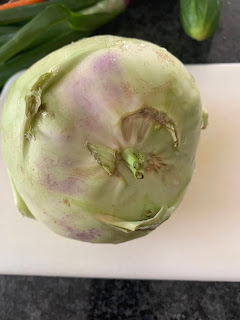Yes, that's a lot of lunches, and you might be thinking: what a daunting task to make and deliver all of those lunches! However, when many hands from many families from many partner communities each made lunches for a day or two, the bag lunch program was very manageable. The biggest challenge has always been refrigerator space at the church!
Welcome to the summer of Covid-19, when the Kids Working to Succeed program has been completely re-imagined, including the lunches. Students participate 3 days per week, with online and home activities and one day per week in the garden. Recognizing that families depend on KWTS lunches as a source of summer nutrition for their children, program leaders designed a way for families to have 3 lunches per week at home as part of the program. Each Monday, students come to the church with their grown-up to pick up their KWTS supplies for the online and home activities as well as their Grocery Bag Lunches.
Grocery Bag Lunches consist of provisions for lunch for a family of 5 for 3 days per week. This summer, there are 12 families with kids in the KWTS program. At first, partner churches were skeptical about this new lunch model. Grocery shopping for 12 families for 3 days of lunches for 5 people - that's 180 lunches! However, if you think about making lunch for 3 days for your family of 5 and needing to grocery shop for that times 12, maybe it doesn't seem quite so daunting.
Well, with just a little encouragement, the partners accepted the challenge. Hopefully, they are feeling positive about Grocery Bag Lunches on their end, because by mid-summer, All Peoples is claiming Grocery Bag Lunch a success! In fact, here are some messages which have come in from KWTS families:
[We received] the best lunches today, 3 bags of food separated into 3 categories, spaghetti and meatballs lunch, sub sandwich lunch, and hot dog lunches with ALL the fixings. These actually brought tears to my eyes because all of our kids go home with this fabulous stuff!! Not just a basic bag lunch. It even excites [my husband].
My son feels proud to bring these lunches home for the family.
These lunches are making something new happen for us. We are actually making lunch and eating it together. I like this family time better than the old way.
Partners have been impressively creative, have baked dozens and dozens of homemade cookies, have packed groceries in re-useable bags - it is beautiful! The love that goes into shopping and organizing is very apparent to the families.
From a logistics perspective, the Grocery Bag Lunch program has been very easy to manage. If a family has transportation challenges, delivering the Grocery bags to their home as a porch drop on Monday has worked well. Keeping the items in bulk packaging has eliminated the trash problem that has sometimes been an issue around the church.
Maybe you are wondering why Grocery Bag Lunches are a topic in the Harvest Hands Blog. All Peoples grows food as part of an overall commitment to food justice ministry and increasing food security for families that struggle to put daily bread on the table. Grocery bag lunches are literally helping our kids to grow as they grow food for their community. This story is one way in which All Peoples can highlight the ways in which many hands are coming together to do this food justice work and to say thank you.
 |
| KWTS small group working in the garden |



















